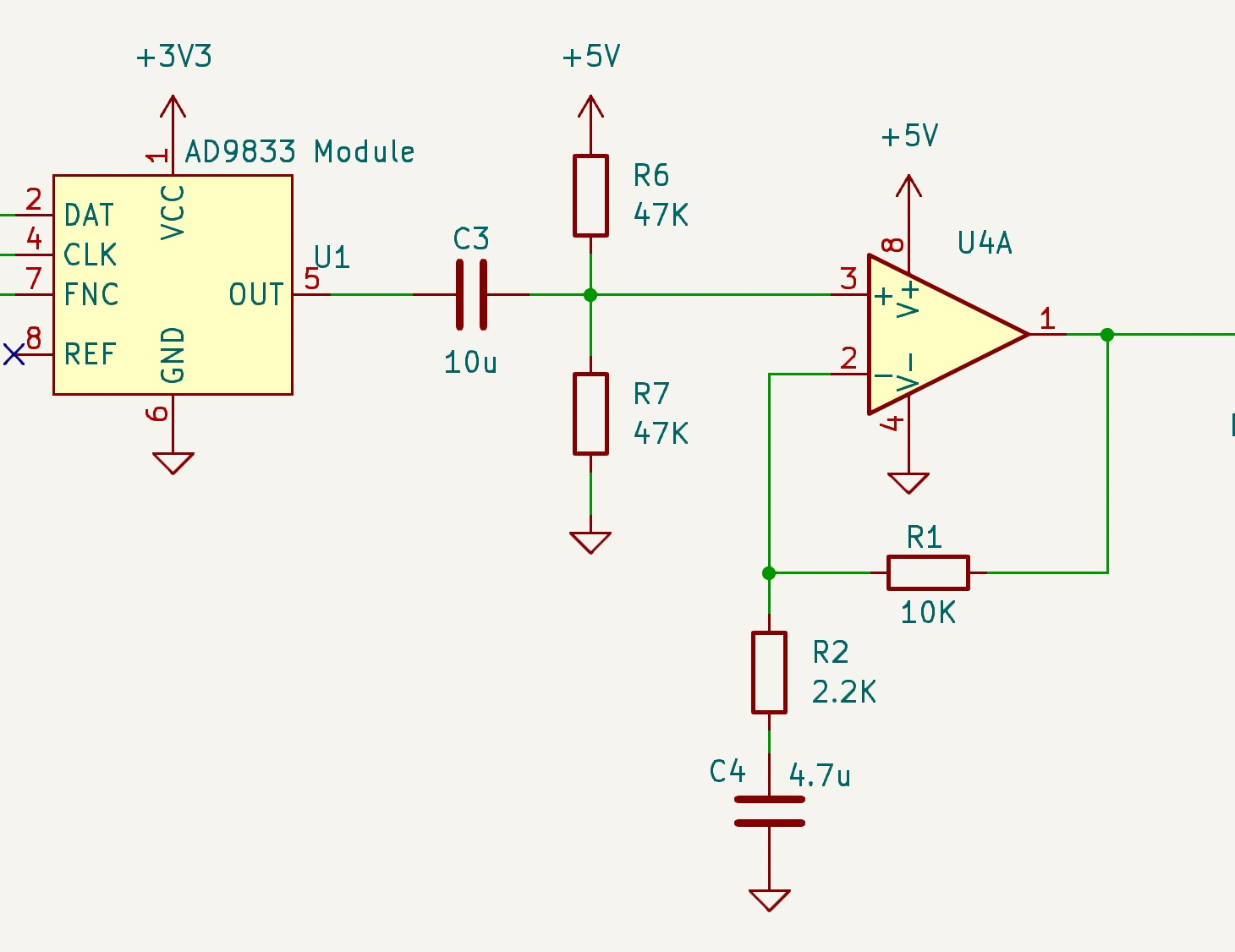I'm trying to amplify a sine wave signal with opamps of high bandwidth and slew rate. It works fine up to about 700 kHz, then the gain decreases and about 1 MHz it's only 1, when it should be about 5.
I'm testing with the circuit below and two different opamps, with similar results: LMH6658 (bandwidth 270 MHz, slew rate 700 V/μs) and AD8066 (bandwidth 145 MHz, slew rate 180 V/μs).
LMH6658: https://www.ti.com/lit/ds/symlink/lmh6658.pdf?ts=1711450406602
AD8066: https://www.analog.com/media/en/technical-documentation/data-sheets/ad8065_8066.pdf
I don't know if I miss something. Should I expect to be able to get a gain of 5 with these opamps up to 5 MHz?
I'm testing in a breadboard. The input signal is about 600 mV, and the sine wave is clean and not distorted in the output, even above 1 MHz.
Could be that the opamps are fake/relabeled, but before returning and ordering them in Mouser I wanted to make sure. I don't know if there could be other problems. I understand that the opamps with that bandwidth and slew rate should be enough for these frequencies, but I'm not sure. Thanks!
Edit: I add some concrete numbers. Checking it better I see the performance of both opamps is different (after many tests I had a mix of results in my head). LMH6658 is much better, but anyway the gain starts to decrease below 500KHz.
LMH6658 (input signal ampl -> output signal):
100KHz: 680mV -> 3.32V
400KHz: 680mV -> 3.24V
600KHz: 680mV -> 3.16V
800KHz: 640mV -> 3.00V
1MHz: 600mV -> 2.84V
2MHz: 480mV -> 2.16V
AD8066:
100KHz: 680mV -> 2.56V
600KHz: 680mV -> 1.30V
800KHz: 640mV -> 1.00V
1MHz: 600mV -> 760mV
2MHz: 480mV -> 360mV

